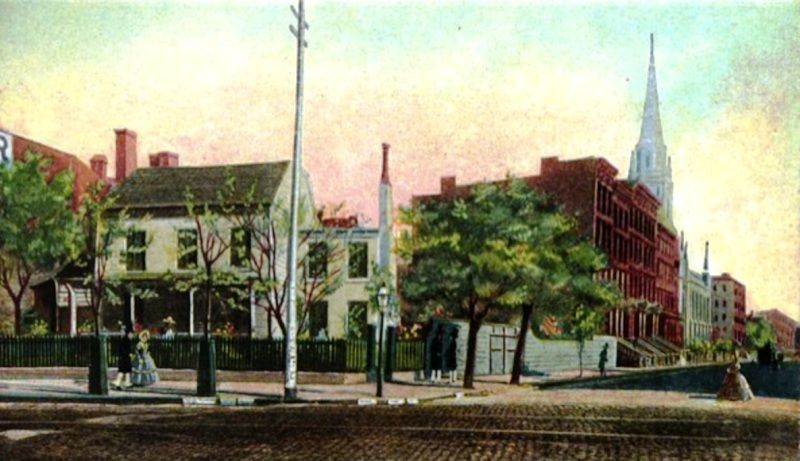How to See the Liberty Bell...in Queens
A copy of the famous American bell can be found inside a bank, which itself is modeled after Independence Hall!


In 1869, Peter Gilsey, a wealthy merchant and city alderman, leased a large parcel of land from the Casper Samler estate for $10,000 a year. On this land, located just north of Madison Square Park, he constructed Gilsey House, an eight-story hotel on the northeast corner of Broadway and West 29th Street. The hotel was erected on the exact site of the old Casper Samler farmhouse and the former playing grounds of the St. George Cricket Club.
Casper Samler was a farmer of German descent who had a large dairy farm along the Bloomingdale Road (Broadway). His 41 acres, which he purchased in the late 1700s, comprised a good portion of the Common Lands of the City of New York (later called the Parade Ground and Madison Square). The triangular-shaped farm was bounded by the Bloomingdale Road and the old Eastern Post Road (the road to Kingsbridge), from about present-day 23rd Street to 42nd Street.
The first international cricket game (USA vs Canada), which took place in 1844 on the grounds of the St. George Cricket Club. The grounds were located on the Bloomingdale Road (Broadway) between 30th and 31st Street. The buildings in the background may be the rear of the Casper Samler farmhouse and stables, or perhaps the back of Ralph Burrough’s ale house, depending on the artist’s vantage point.
In the early 19th century, the vacant land behind the Samler farmhouse served as the playing grounds for the St. George Cricket Club, aka, the Dragonslayers. The club was formed in 1838 and, until about 1844, held its matches in a vacant lot behind an ale house just north of 30th Street (now present-day 1236 Broadway).
According to an article posted in “Spirit of the Times” on March 18, 1882:
“For the purposes of a cricket ground the Dragonslayers scoured occupation of a plot of land, severed from a kitchen garden, to the rear of a diminutive wayside tavern on Broadway, then the Bloomingdale Road, a short distance above the House of Refuge (Fifth Ave and 23rd)…
“The wayside inn or ale cottage, for it was a mere two-story shingle tenement, guarding entrance to the cricket-field was, however, a well-known place of resort, despite its dwarfish and insignificant appearance, with pedestrians, as its proprietor, Ralph Burroughs, an uncouth Englishman, was notorious among his epicurean countrymen as the cultivator of the most luscious and delicious kitchen stuff to be purchased upon Manhattan Island.”

Ralph Burroughs’ vegetable dishes made with celery, asparagus, and other vegetables grown in his garden were reportedly quite popular. It was through this garden that one had to traverse down a narrow path to reach the cricket grounds.
When Casper Samler died in 1810, his farm passed to his grandchildren and a step-daughter, Margaret. The farmhouse on the Bloomingdale Road remained occupied by James Anderson until 1869, when it was torn down to make way for Gilsey House.
Gilsey House closed in 1911 after a lengthy legal conflict between the operator of the hotel and the Gilsey estate over the lease terms. The building was converted into co-operative apartments in 1980 and still stands today atop an old farm and cricket grounds.
For more on lost hotels of New York City’s Gilded Age, check out 10 of NYC’s Lost Grand Hotels. Get in touch with the author @HatchingCatNYC
Subscribe to our newsletter